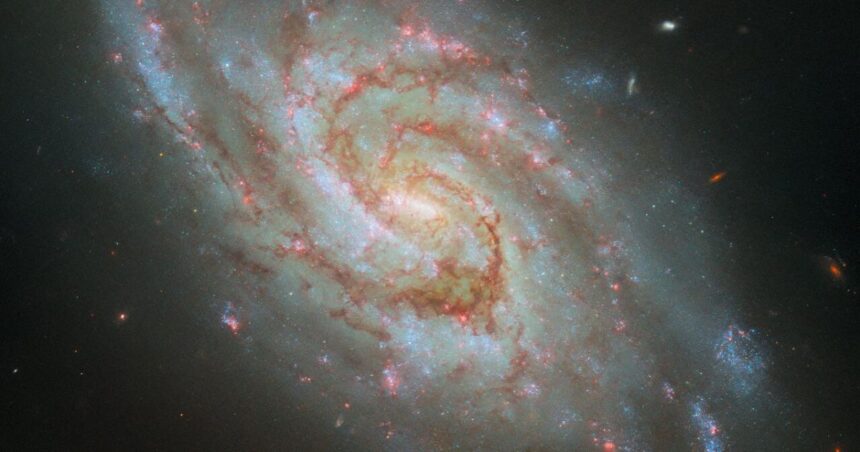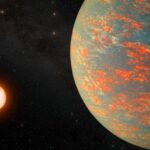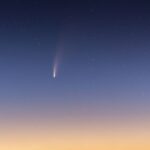NASA’s Hubble Telescope captured an amazing galaxy named IC 1954. It is located about 45 million light years away from the Earth. IC 1954 is a spiral galaxy. This galaxy is present in the constellation of Horologium, known as the Clock.
It has a bright central bar and two large, winding spiral arms. These arms are filled with dark clouds of dust and glowing patches of blue and pink. This spiral galaxy looks like a big clock in space. If we see this galaxy in space, it seems like a pendulum appears to be swinging back and forth.
What Makes This Spiral Galaxy Special?
Hubble captured every detail of the IC 1954 spiral galaxy. It shows the star-forming regions of the galaxy better than before. The region that is displayed is where new stars are born. The bright red areas in the image are where Hydrogen is present. As you know, Hydrogen is the fuel for new stars.
The European Space Agency (ESA) explained that the bright red spots are H-alpha regions. These regions are important because they show where new stars are forming. The Hubble Telescope has a unique filter that captures this red light. It is very different and powerful than other telescopes.
The discovery of this galaxy is not only the work of the Hubble telescope, but another NASA telescope, the James Webb Space Telescope, also contributed. It also used data from Chile’s Atacama Large Millimeter/submillimeter Array (ALMA). All these telescopes are used to capture images of nearly fifty galaxies.

By combining data from different telescopes, scientists can learn more about how stars and galaxies form. The Hubble Space Telescope is especially good at capturing young stars and star clusters. It has the power to see them in ultraviolet light; these are the wavelengths where young stars shine the brightest.
Spiral galaxies like IC 1954 are very important for astronomers. They help scientists understand how galaxies evolve over time. The new image of IC 1954 will be a valuable resource for future research. It will help scientists study stars’ life cycle and matter’s movement in galaxies.
A Closer Look at IC 1954
The spiral galaxy IC 1954 has a bright central bar. Some astronomers think this bar is a very active star-forming region. It just happens to lie over the center of the galaxy. This makes the galaxy look even more like a clock, with the bar as the clock’s hands.
The galaxy’s spiral arms are also exciting. They are filled with dark clouds of dust and glowing patches of blue and pink. These patches are where new stars are forming. The dust clouds are important, too. They are made of the same material that forms new stars.
The new image of the spiral galaxy IC 1954 is just the beginning. The data from this image will help scientists study other galaxies too. The Hubble Space Telescope will continue to capture images of galaxies and stars. The James Webb Space Telescope and ALMA will also keep collecting data.
Together, these telescopes will help scientists understand the universe better. They will study how stars and galaxies form and evolve. The new image of IC 1954 is a big step forward in this research.




